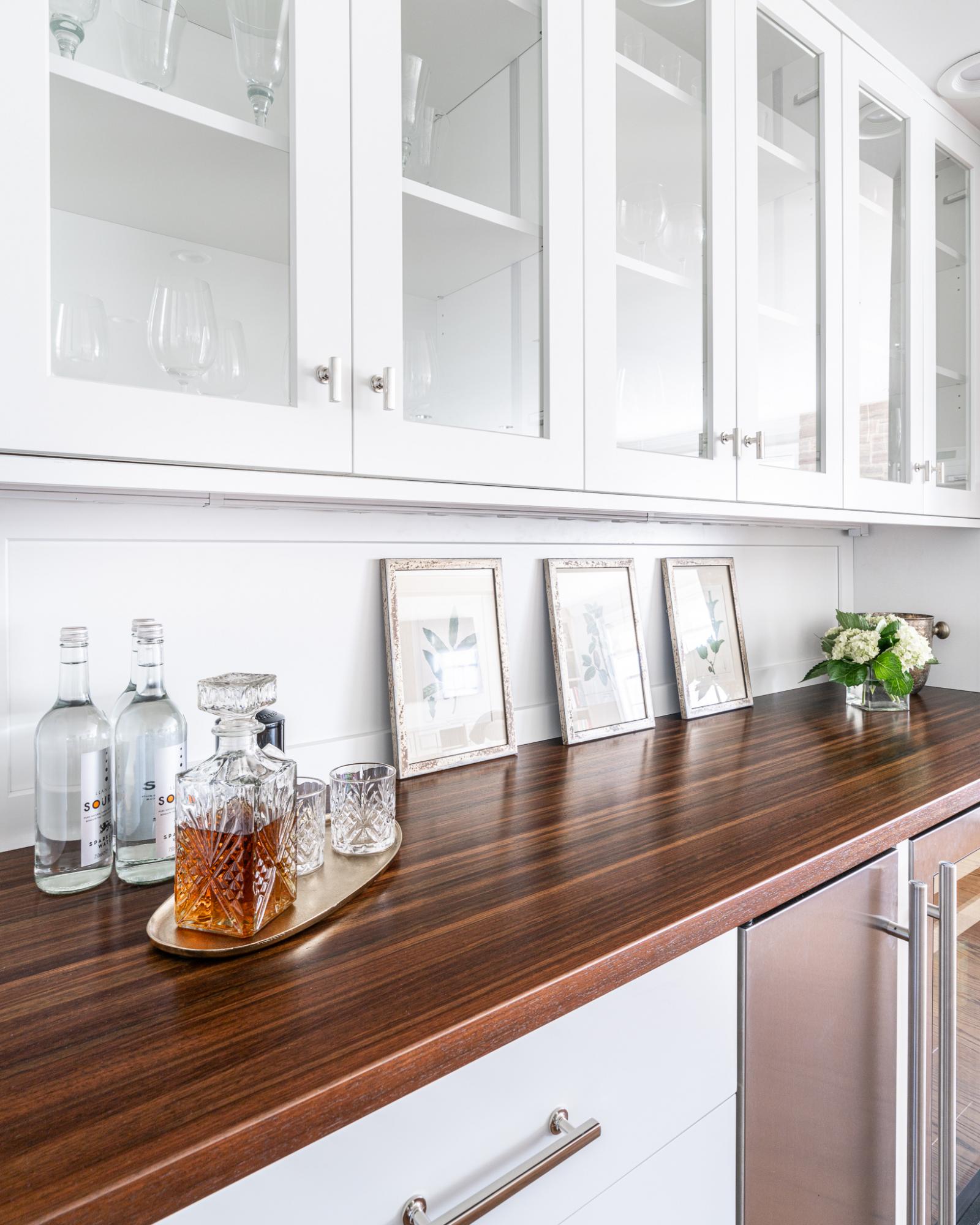While the appearance of a countertop may seem like the #1 deciding factor, it’s important to understand there are tradeoffs when determining which top is right for your kitchen.

Quartz is extremely popular, and for good reason. Unlike most surfaces, quartz requires absolutely no sealing and is very low maintenance. This nonporous material is engineered by mixing ground quartz with polymer resins and is made to appear like rock mined from nature in large slabs. Quartz offers many color options since pigments can be added during the engineering process. Depending on preference, it is available in either a polished or matte finish. This low maintenance material is both stain resistant and very hygienic. Because of the resins, the countertop is highly durable and able to withstanding the demands of installation and long-term use. Unfortunately, the material is not completely heat resistant, so hot items placed on the surface can lead to possible discoloration or cracks due to thermal shock.

Quartzite forms in nature as sandstone is subjected to heat and pressure. Unlike quartz, quartzite will never undergo an engineering process. Instead, it is mined in slabs, then fabricated to fit your space. Although the general appearance is similar between quartz and quartzite, quartzite has a less manufactured look due to the deep crystals that run throughout the material. Because quartzite does not contain any polymer resin, it will require a sealant every year or two in order to protect against stains.

Marble charms with its beauty and timeless appeal. Unfortunately, this natural surface does have some drawbacks. Marble is a porous surface so staining is a common problem. Sealants exist, but currently there are no reliable options on the market. Homeowners will either need to reseal their marble frequently or take great care when dealing with substances like red wine and pasta sauces that could produce stains. On the bright side, marble is heat resistant!

Soapstone is a natural material that has the ability to withstand a high amount of heat without causing damage to the top. Like quartz, it is nonporous and able to resist both stains and bacteria from penetrating the surface. Soapstone is known for having a deep black color, often with thin grey and white veining running throughout it. We highly recommend this material for farmhouse style kitchens and baths, however, it is also stunning when featured in a contemporary design. These countertops should be oiled regularly to maintain the shine and help smooth out any scratches that may occur, since this is not a scratch-proof material.

Dekton, like quartz, is an engineered material molded from porcelain, quartz, and glass. The mixture forms a surface that allows for high heat exposure without any damage. You can actually hold a flame against the surface for an extended period of time with no change in appearance or physical properties. Because of its dense nature, Dekton cannot be scratched. It is also UV and chemical resistant making it perfect for outdoor bars and tabletops. Dekton also offers a lot of advantages when it comes to seams. Seams are an issue with all countertop options. If the grain is book matched, the seam will appear less noticeable to the eye, however, if sections of marble or granite are not cut from the same slab, book matching becomes impossible. With Dekton, there is a guaranteed book match so that the countertop flows in a consistent manner.

Wood provides a kitchen with the warmest of looks. Species with lots of grain can add a unique detail within the space. When sanded and finished, it can be one of the smoothest surfaces from which to choose. As you can imagine, wood needs plenty of care. Scratches and stains are virtually unavoidable, water will damage if left sitting too long, and moisture in the air will cause the wood to swell over time. Sealants will help minimize these worries, yet the homeowner should always be cautious of sharp objects coming in contact with the top. Keep in mind, wood doesn’t necessarily need to be used for the entire countertop space. Instead, it can be combined with another material such as quartz. For example, a butcher block, meant for food prep, can be installed next to a larger quartz top.